MARKET OVERVIEW
The Global AI in Recruitment market, sitting in the more extensive milieu of human resource technology, will continue to change how organizations source for, screen, and engage talent. This market shrine focuses on the integration of AI with recruitment workflows to bring in data-driven systems for improving decision-making and cutting down on inefficiencies in talent sourcing. In the face of changing hiring needs, AI recruitment tools will become critical to sort through huge amounts of candidate data and streamline hiring processes.
Hiring systems will be more proactive in support of talent strategies. The Global AI in Recruitment market will see platforms performing the functions of a human recruiter, such as resume screening, candidate sourcing, and scheduling of initial interviews. Such AI solutions will allow recruitment teams to focus their energies more on qualitative evaluations while still scaling into large volume hiring projects. Algorithms will measure not just qualifications, but factors like behavioral data, digital presence, and communication styles - all together painting a more nuanced picture of potential candidates.
The market will cover various industries such as information technology, finance, health, and manufacturing. Each sector will adapt its own AI tool according to requirements pertaining to recruitment, thereby embodying the core initiatives of accuracy, consistency, and fairness. The Global Artificial Intelligence in Recruitment market is likely to keep pace with recent innovations aligning these with goals of the organization so that AI will perform as engine function and long-term workforce planning and development.
Embedding Bias Detection and Designing Ethical Algorithms as features will be staple offerings within this market. As these automated systems get into sensitive aspects of the candidate data, companies will have no choice but to turn to tools that purport end-to-end transparency in their decision logic. The software under the Global AI in Recruitment market will feature responsible usage of AI-hence enabling recruiters to see the basis of some recommendations and go further to provide intervention whenever necessary. As such, more and more stipulations regarding data privacy will increasingly affect the nature of solutions offered by AI, pushing vendors to adopt frameworks built around privacy-by-design means, and ensuring compliance across jurisdictions.
Global AI in Recruitment market is estimated to reach $1192.1 Million by 2032; growing at a CAGR of 8.0% from 2025 to 2032.
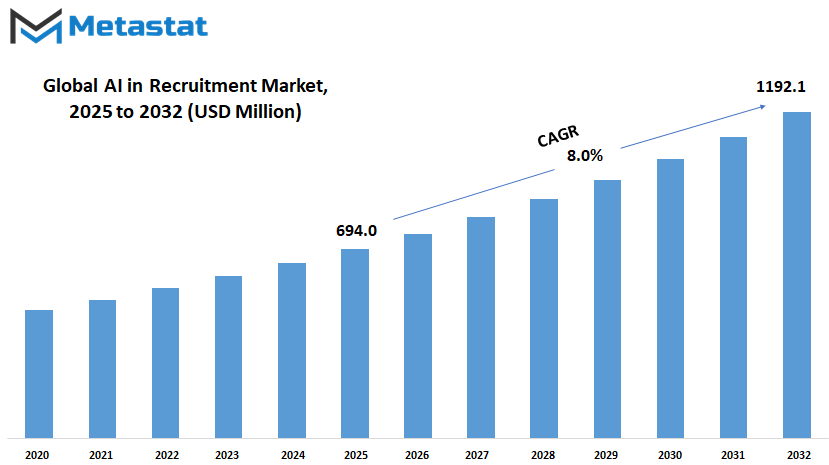
GROWTH FACTORS
The Global AI in Recruitment Market is changing the way companies hire new talent. The more digital tools are used by the companies, the more AI is being incorporated into hiring processes. But this shift is not only about making things faster but also increasing the accuracy and reducing the bias in hiring decisions. The need for better quality of hire is one of the major growth drivers of this market. The companies want to hire the right people for the right roles, and AI tools provide assistance in doing this, collecting and analyzing data from resumes, previous performances in jobs, and even social behavior.
Another drive comes from the increasing number of applications that companies receive for any job positions they want to fill. Manually sorting through hundreds of resumes takes time and is often a process when great talent may be missed. AI systems can very quickly assist in scanning and sorting applications to put the focus back on human recruiters to sort the most qualified candidates. This is not just about automation, where the enhancement makes teams smarter with less effort. With this, recruiters can spend more time on the personal side of hiring, such as interviewing and candidate engagement.
But in spite of the promise AI prong, it has raised some issues that may hinder market growth. One such problem is the presence of built-in biases. Since the training data has been tainted, the result might echo the same.
MARKET SEGMENTATION
By Type
The Global AI in Recruitment market is steadily gaining traction as companies are seeking efficient means of managing hiring. Technology is evolving so fast that companies are now rethinking recruitment-from manual process to fast and smarter systems. AI is no longer an additional choice; it is now part of the recruitment system. Employers are interested in making better decisions and saving time without having to sift through thousands of applications on their own. This is where AI comes in- the use of tools that make the journey of hiring purpose-driven.
Process automation, one of the stronger sectors within this market, will serve to a great extent in cutting back on salting chores---scheduling interviews, sending follow-up emails, or organizing applications. Thus, recruiters will spend more time on talent evaluation than paperwork. Process automation is projected to peak by the year 2025 at a worth of $244.8 million, thereby leading to the drift in how companies conduct recruitment.
Another key function with AI within a market segment will be campaigning. Such tools will help companies tap the right candidate with the right job announcement message at the right time. This will help in better job advertising and wider reach for recruitment campaigns. This instance of the market will reach about USD 81.8 million, showing high growth potential for the clarity and timely communication, it provides.
Predictive hiring needs assessment and data insights are some of the other AI-powered features enhancing recruitment in unconventional ways, which may be valued at around USD 56.9 million. All of them put together are testimony to how the Global AI in Recruitment market is actively shaping the future of hiring, helping companies build strong teams with less effort and less speculation.
By Deployment Mode
Favorable signs appear in terms of spirited development of the Global AI in Recruitment market. This is because organizations consider smarter, faster, and more efficient ways of hiring the right people. One of the more noticeable shifts happening is regarding how companies set up these AI tools because the market by Deployment Mode divides into Cloud-Based and On-Premise systems, and each option is associated with unique benefits based on the premises and operations of the respective companies. The other emerging trend has seen a number of organizations adopt cloud-based systems basically because they are easy, less hardware and space consuming in terms of installations, and have rapid updates. Since they are hosted remotely, they provide flexibility in cooperation among the hiring teams operating from different locations.
On the other hand, these are On-Premise systems preferred by some organizations. Installation occurs under the own network of the company and managed internal teams. Hence, though this option may consume time and resources as compared to the others, it provides a higher degree of control and security for data. Mostly, businesses that deal with sensitive or private information will, therefore, lean toward this model. With the advance of AI, some firms will want to restrict their exposure regarding its usage, particularly in recruitment, wherein fairness and privacy have been of great concern.
By End Users
As a major force within the Global AI in Recruitment market, it will welcome a major change in recruitment approaches of organizations. With the spread of artificial intelligence across various types of organizations, firms are realizing the advantages of AI tools in recruitment processes. The AI tools are timesaving, reduce human bias, and enhance the experience of both employers and candidates. From the processing of a huge number of applications to the selection of candidates for interviews based on specific job requirements, AI brings the efficiency that is sometimes lacking in traditional systems.
As is typical, large enterprises lead in the adoption of AI in recruitment. These companies usually have the resources to invest in advanced systems and a sufficiently high volume of hiring that makes automation worthwhile. Their recruitment units are inundated with considerable numbers of applicants, and timely solutions are required to mitigate this workload. AI tools help eliminate down-time by filtering through applications, scheduling interviews, and predicting probable performance levels of candidates. This reliefs the demands on human recruiters while speeding things up without cutting corners on quality.
In line with that, small and medium businesses (SMBs) are also beginning to invest in AI systems for recruitment. While they cannot match the budgets of big companies, many inexpensive AI-driven systems are coming up for such platforms.
|
Forecast Period |
2025-2032 |
|
Market Size in 2025 |
$694.0 million |
|
Market Size by 2032 |
$1192.1 Million |
|
Growth Rate from 2025 to 2032 |
8.0% |
|
Base Year |
2024 |
|
Regions Covered |
North America, Europe, Asia-Pacific, South America, Middle East & Africa |
REGIONAL ANALYSIS
The Global AI in Recruitment industry is slowly changing hiring practices for companies, and this change is expected to grow steadily. Across various regions, the advancement of technology and changing labor requirements are pushing industries to think smarter, faster, and more efficient about how they recruit talent. Each geographical area is moving at its own pace, grappling with its own challenges, but toward a central future where artificial intelligence has taken center stage in employment strategies. In North America, particularly the U.S. and Canada, companies are increasingly using AI tools to provide a better match between candidates and job roles. These countries are well ahead in experimenting with tools for filtering resumes, assessing candidate behavior, and even conducting preliminary interviews. The market here is expected to see a steady growth trajectory as companies in Mexico begin to delve into these alternatives and infrastructure picks up.
In Europe, countries like the UK, Germany, and France, which go beyond Italy, are steadily ramping up their investments into AI-based systems for hiring. The recognition of AI, among businesses in these countries, as a tool to cut down on time spent hiring, along with a high level of accuracy, is gaining traction. Drivers of change are competition and regulatory challenges. Indeed, many companies are looking for ways to ward off bias and support diversity through technology-based screening. Even though adoption is different from one country to another, interest across the region is rising as firms explore how these systems can support long-term workforce planning.
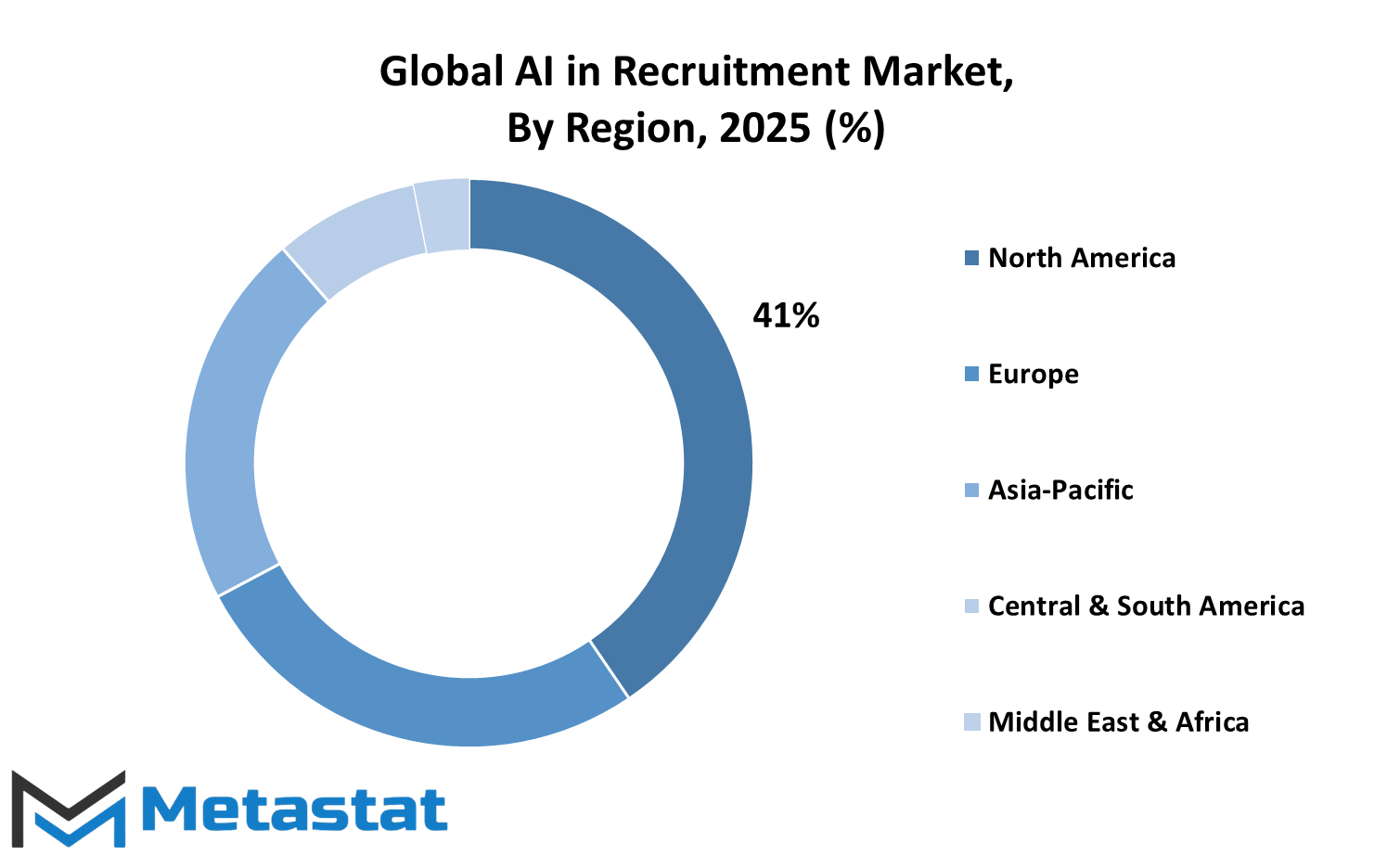
COMPETITIVE PLAYERS
AI in recruitment is turning out to be an emerging global market having an impact on the way organizations are thinking about recruitment by making it fast, smart, and efficient. The trend of using artificial intelligence in recruitment processes is becoming greater with businesses looking for better ways to match the right candidates to the right roles. The AI tools used in recruitment are from scanning resumes to scheduling interviews and aim to reduce the repetitive tasks so that HRs can focus more on people and not on paperwork. Going forward, the Global AI in Recruitment market should act as a major catalyst in redefining the way organizations build their teams.
Among the active players are Eightfold AI; iCIMS; X0PA AI; Employ Inc. (Jobvite); XOR AI, Paradox, Inc.; HireEZ; Fetcher; Recruitment Smart Technologies; Ceipal Corp.; HireVue, Inc.; Manatal. From sourcing candidates to predicting the success of a hire, these players furnish tools to handle it all. These companies will probably expand as technology continues to develop, capitalizing on data, trends, and behavior, to give ever-more precise insights for the benefit of employers in making better hiring decisions and concerning the candidates' overall experience.
For the time being, in looking toward the future, it may be accepted that nearly every aspect of recruitment is going AI; hence, AI systems that could steer interviews by recognizing tone and body language are likely to follow this. The system would then scan resumes, outlining all relevant skills and experience, in seconds.
AI in Recruitment Market Key Segments:
By Type
- Process Automation
- Campaigning
- Candidate Screening
- Candidate Communication
- Others
By Deployment Mode
- Cloud-Based
- On-Premise
By End Users
- Large Enterprises
- Small & Medium-Sized Businesses (SMBs)
- Recruitment Agencies
- Staffing Firms
Key Global AI in Recruitment Industry Players
- Eightfold AI
- iCIMS
- X0PA AI
- Employ Inc. (Jobvite)
- XOR AI
- Paradox, Inc.
- HireEZ
- Fetcher
- Recruitment Smart Technologies
- Ceipal Corp.
- HireVue, Inc.
- Manatal
WHAT REPORT PROVIDES
- Full in-depth analysis of the parent Industry
- Important changes in market and its dynamics
- Segmentation details of the market
- Former, on-going, and projected market analysis in terms of volume and value
- Assessment of niche industry developments
- Market share analysis
- Key strategies of major players
- Emerging segments and regional growth potential



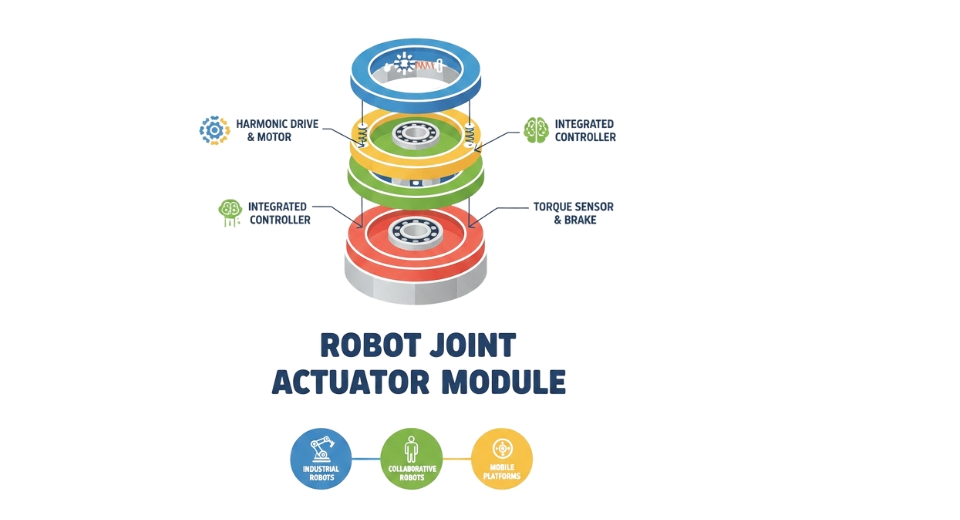
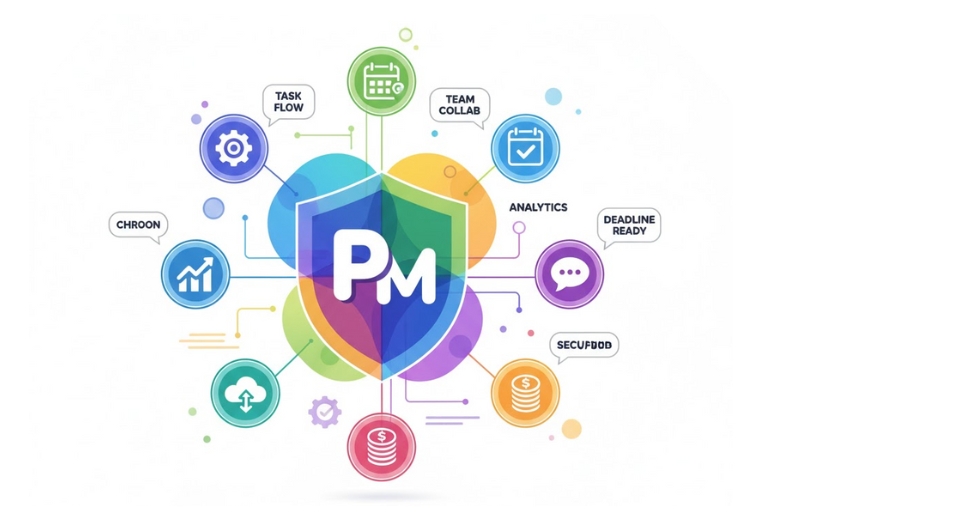
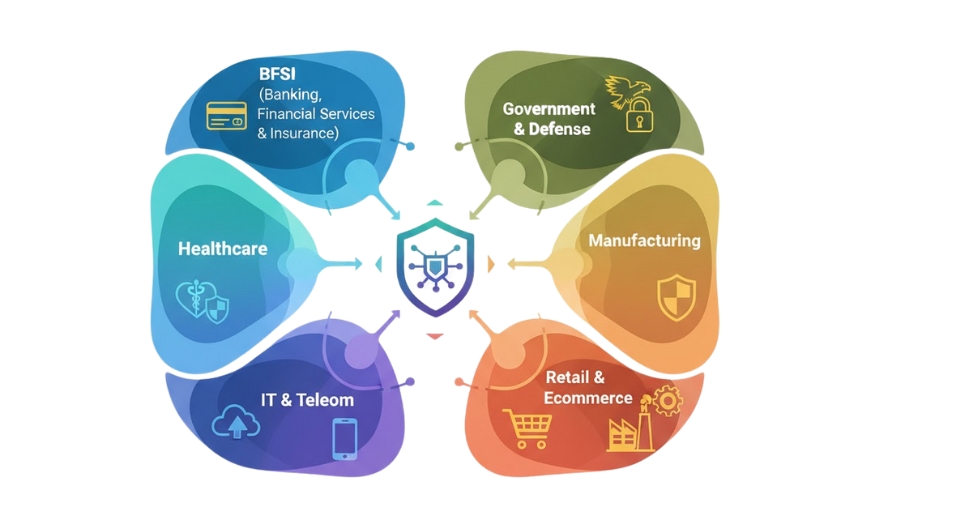
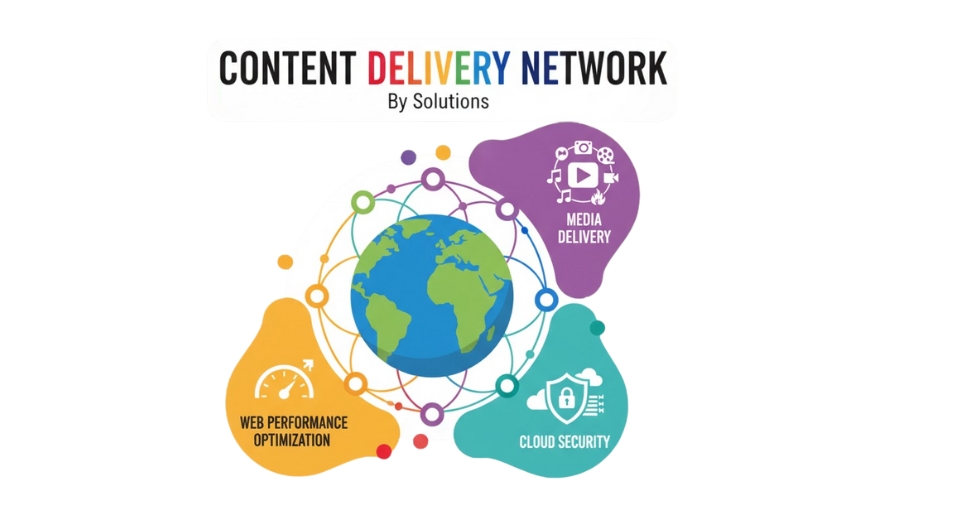

 US: +1 3023308252
US: +1 3023308252






